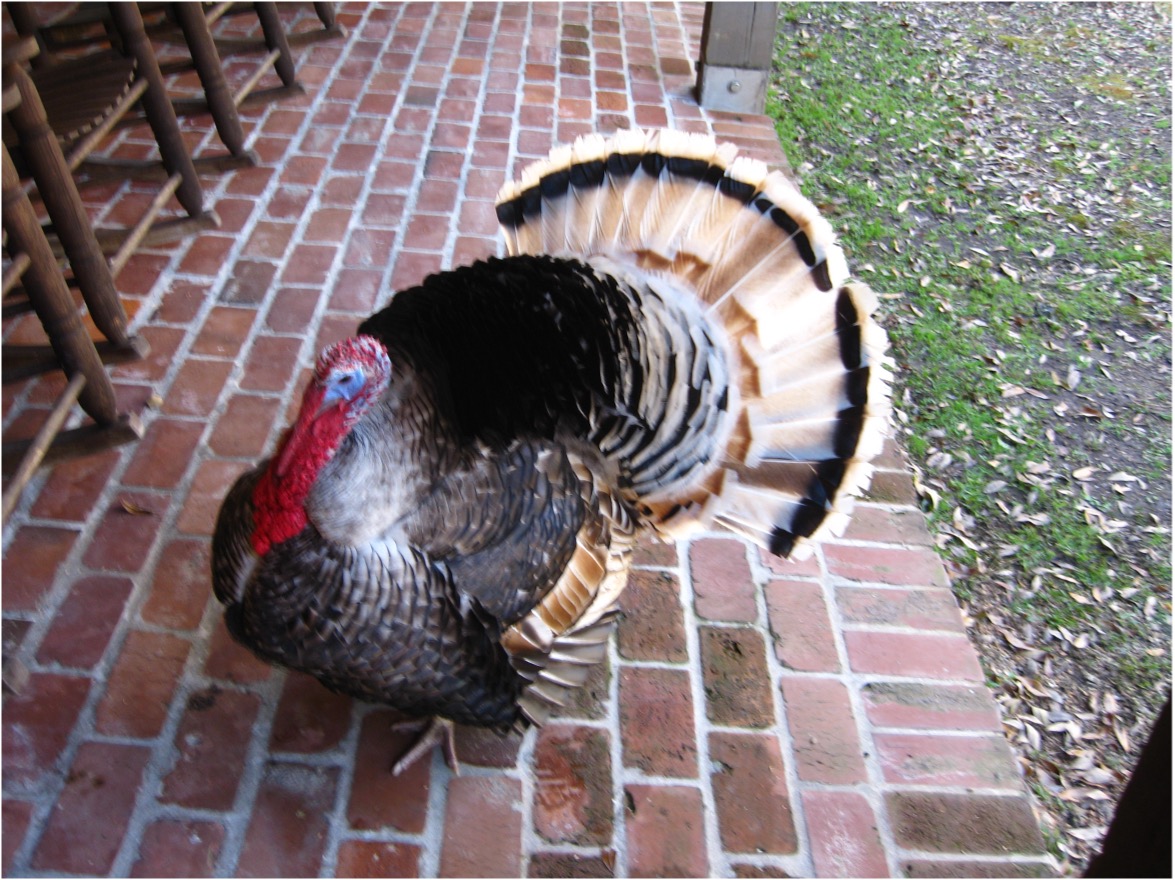Turkey's On
Contact
University of Arkansas System Division of Agriculture
Cooperative Extension Service
2301 S. University Ave.
Little Rock, AR 72204

Turkey's On
‘Tis the season. Turkey time. This all-American bird was one of the wild creatures Europeans met when they arrived on this continent 500 years ago. They numbered in the millions and were spread across the country. Not surprisingly, our social history and the natural history of the continent’s second-largest game bird have long been entangled.

My formative years in the 1950s were spent tromping through the creeks and prairies of central Oklahoma where little in the natural world escaped my notice. In those days there were coyotes, opossums, jackrabbits, quail, red-tailed hawks, lizards, snakes and turtles, but I never saw a deer or wild turkey. Today, both of those species are common, but sadly, the quail are now largely missing.
In Arkansas, the situation was much the same. By the opening of the 20th century, most of our forests had been cut, our large game — buffalo, elk, bear, deer, water fowl and turkeys — were at or near extinction. In 1927 Arkansas began establishing wildlife management areas and a hunting season for turkeys. But because turkey numbers were already in free fall, so much prime habitat had been lost and enforcement of existing regulations was limited, the state suspended turkey hunting altogether in 1945.
The first conservation efforts to restore turkey populations were a failure. Wild turkeys were kept in captivity, eggs hatched and the poults raised by hand until they were released into the wild. Unfortunately, the hatchlings imprinted on their human caretakers and weren’t able to survive in the wild. After that, wild birds were captured and relocated in various forested parts of the state where they began reestablishing. By the late 1950s limited hunting was allowed.
By the mid 1980s the state’s turkey population had increased to around 100,000 birds and hunting was resumed. Ebbing and flowing with the season, the numbers have remained near or below that high water mark ever since. Originally there was a short fall and spring hunting season, but in 2009 the fall season was shut down because of a poor hatch. Since then the spring season has resumed, lasting about 10 days in late April in the Ozarks and northern counties and about three weeks south of the Arkansas River. The bag limit is two adult toms per hunter. In 2024, 9335 birds were reported taken from a population estimated to number around 92,000 statewide.
Turkeys are ground nesting birds that favor open forests or edge-of-field locations where there is nearby brush and tree cover. Hens typically lay a clutch of 10 to 14 eggs in mid-spring, delivering one per day. Then she sits on the nest for about a month. Unsurprisingly, the list of predators to the eggs, the young poults, and even mature birds is long. They are strong flyers and roost at night in trees, at least when the fledglings are old enough to make it to the tree tops. Wild turkeys have keen eyesight and are extremely wary animals, but their ground-based lifestyle makes them vulnerable to attack.
Archeologists believe turkeys were grown by tribes in the southeastern states over 1,000 years ago. In a Tennessee site, they found bigger-than-normal boned turkey skeletons and there were more males than females. Typically a flock will have only a few males and more females. The larger bones are an indication that the birds may have been fed corn to plump them up. The males were favored because they weigh in at about twice as much as a female and the plumage, instead of being dull brown as seen in the females, is brightly colored. The bright feathers were used for cloaks, headdresses and fletching for arrows.
The Caddo Tribe of southwestern Arkansas has long performed the turkey dance. According to one legend, a hunter was out seeking game when he heard an unusual noise. Stealthily he crept through the woodland until he came upon a tom making rhythmic chortles while several hens circled in a distinctive dance pattern. The hunter returned to the village and taught the fancy dance steps to the women, and the turkey dance was born.
The first Thanksgiving celebrated by Europeans in 1621 probably did not include a turkey, but turkeys were in the area where the Pilgrims sat down for their feast. The “Mother of Thanksgiving” (Sarah Josepha Hale, author of “Mary Had a Little Lamb”) described the addition of turkey to the celebratory meal in some of her writings in the 1820s and ‘30s. In the mid-1840s she started a letter writing campaign to establish an official day of thanks. In the war torn year of 1863, President Lincoln finally declared the fourth Thursday of November as the date.
This year, as we settle around our plump Thanksgiving turkeys — a bird that anatomically looks as though walking would be a challenge and flying an impossibility — let us all take a moment to be thankful for all the things we have in our lives.